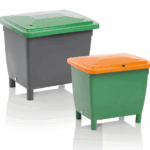San Diego County Medical Waste Disposal
1. San Diego County Medical Waste Disposal – Federal And State
Federal and state requirements must be complied with to maintain compliance with California’s medical waste disposal processes. State laws could have more stringent criteria for context and scope than federal legislation. Healthcare workers should also be familiar with the standards of the Environmental Protection Agency and the Resource Conservation and Recovery Act (read and reviewed).
2. Biological Waste Disposal:
San Diego County Medical Waste Disposal – Biological waste disposal is handled by several organizations in San Diego and the surrounding areas. One of these agencies is the California Department of Transportation. This agency wants to know how medical waste is transported, how it is designated, and where it could end up. You may reduce your risk of noncompliance and fines by being aware of and knowing the requirements regulating the off-site transportation of medical waste generator shipments.
3. San Diego County Medical Waste Disposal – Healthcare:
All healthcare or medical waste producers, including those who generate biological waste, should be aware of the criteria based on the amount of garbage produced by your institution. Do you create in large or small quantities?
(The answer is provided in Chapters 4 and 5 of the California Medical Waste Management Act.) Be familiar with the requirements of each of the regulations controlling consolidation. A medical waste producer in California is referred to as a small quantity generator, or SQG, if they create less than 200 pounds of medical waste per month as required by the Act. A large quantity generator (LQG) is a monthly producer of 200 pounds or more.
4. Detailed Instructions:
You may find detailed instructions for managing and storing medical waste in Chapter 9 of the California Medical Waste Management Act, which also deals with various other issues. Among these are:
- Article 118275 (Medical waste segregation and storage)
- Article 118285 (Sharps waste)
- Article 118280 (Containment and storage processes)
5. California’s Laws:
Be familiar with California’s laws governing the disposal of medical waste. For example, the waste generated by sharps disposal must be maintained in a sharps container. Medical waste streams have to be maintained apart from other waste streams. Medical waste must be stored using the proper garbage cans and techniques. Storage bins, for instance, need to be able to close.
They must be resistant to tearing and leakage from all directions. A biomedical waste container must be labeled “Bio hazardous waste” even if it just contains possibly infectious or contaminated biomedical waste. Sharps containers must be labeled with information on Sharps waste.
6. San Diego County Medical Waste Disposal – Facilities:
San Diego County Medical Waste Disposal – In the city of San Diego, facilities that produce more than 20 pounds of sharps or other potentially hazardous material or biomedical waste each month are only allowed to keep it on-site for a maximum of seven days at a temperature of 32°F or higher without first getting permission in writing from enforcement agencies.
If it stays above 32°F and generates less than 20 pounds of it each month, a facility is allowed to retain such waste on-site for up to 30 days. However, the holding period for biohazardous or sharps waste stored on-site at or below 32°F is up to 90 days without the enforcement agency’s prior written approval.
Keep in mind that if the odor of biohazard waste or the disposal of sharps waste is causing concern, local security authorities have the authority to order more frequent garbage pickup.
7. Medical Waste Manufacturers:
All medical waste manufacturers, large and small, in San Diego County and throughout California must register with their regional enforcement agency. You must also submit a medical waste management strategy to your local medical waste enforcement group.
We hope that by reading these suggestions, you better understand the San Diego County medical disposal process. If you don’t live in San Diego County and you absolutely need to get rid of the medical waste from your facilities, you can hire a company; if you don’t want to, there are other ways to dispose of the garbage still somewhat safe.
- Auto craving.
- Microwave.
- Chemical Dumping.
- Incineration.
The most dangerous method is incinerating medical waste because poisonous gases are released into the air when the trash melts. Even Nevertheless, it is crucial to dispose of medical waste, and if we start doing so right away, perhaps one day we will live in a clean world that doesn’t hurt us and doesn’t threaten other living things.
Medical Waste:
Suppose a business cannot get rid of its own medical waste due to how preoccupied the healthcare facility is. In that case, it can hire other medical waste disposal businesses to aid them. Producing medical waste is no shame; however, not wanting to eliminate your own medical waste is shameful. As people say, raindrops have a flood. If we make sure to eliminate our medical waste, not anyone else’, we can make the world a better place. It is up to us to create a better future for those who will come after us. A better world gives more opportunities for our future generation to shine bright.






